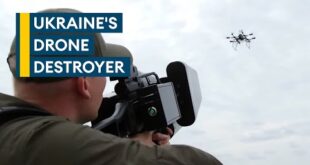 A partnership between a British drone-tech firm and one in all London’s most prestigious faculties has developed a sophisticated drone air-traffic system with a lift from Microsoft.
A partnership between a British drone-tech firm and one in all London’s most prestigious faculties has developed a sophisticated drone air-traffic system with a lift from Microsoft.
Angel Altitude and a workforce of 14 undergraduate computing college students from Imperial College lately introduced the outcomes of a six-month analysis undertaking to develop “the Internet of Flying Things – an open, global platform that connects drone users, manufacturers, authorities, software developers and other aviation stakeholders with a rich source of airspace and regulatory data, plus advanced back-end services including flight automation and collision avoidance,” in accordance to a press launch.
Using computing energy from Microsoft’s Azure Cloud platform, college students designed a number of algorithms to develop the optimum UTM system and demonstrated that greater than 1,000 drones can “successfully co-exist with both manned and unmanned aviation in a 1 km area, crossing paths at a safe distance without human intervention.”
“The students came up with some really innovative designs which complement our existing solution,” Angel Altitude Head of Product Lawrence Gripper. “The proof of concept research undertaken is truly groundbreaking. We are already investigating options for further development of these options.”
Two pupil groups competed to develop essentially the most profitable algorithm to guarantee drones don’t crash into manned plane and different airborne objects.
Imperial College Professor William J. Knottenbelt explains:
“This project demonstrates why it is so mutually beneficial for computer science students to interact with industry. In this instance, our students were empowered to achieve to the best of their potential by Altitude Angel, who provided valuable domain expertise, test infrastructure and regular feedback, and Microsoft, who provided cloud-based resources. It also shows the importance of being open to ideas from other disciplines: in this case the physics-based notion of treating the drones as charged particles which naturally repel one another turned out to be a critical element of the solution.”
Earlier this yr, Altitude Angel partnered with NATS, the group that handles UK air visitors management. The undertaking noticed the event of the Drone Assist App, a platform offering air-safety information to drone pilots.
 Unmanned Aerial Vehicle The latest drone news
Unmanned Aerial Vehicle The latest drone news

